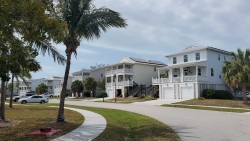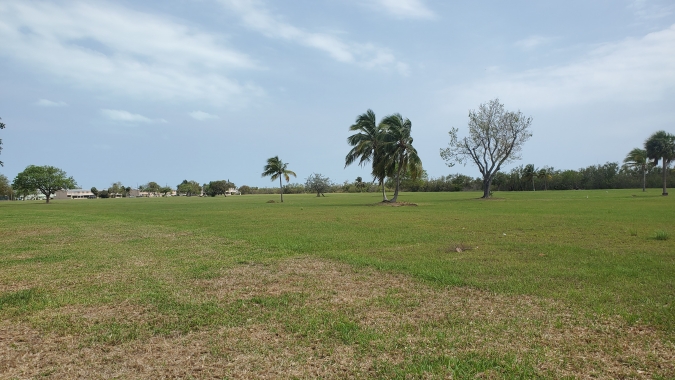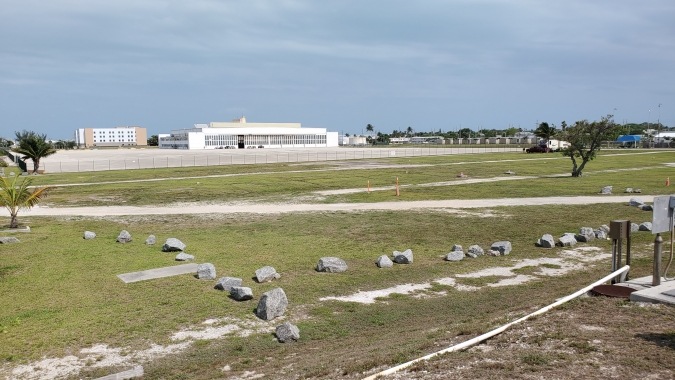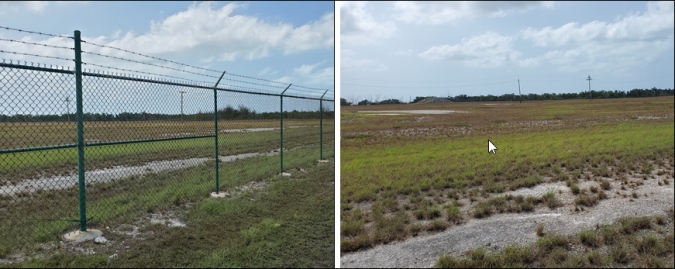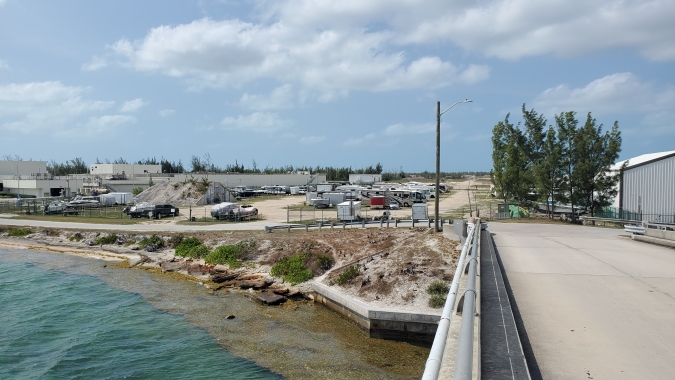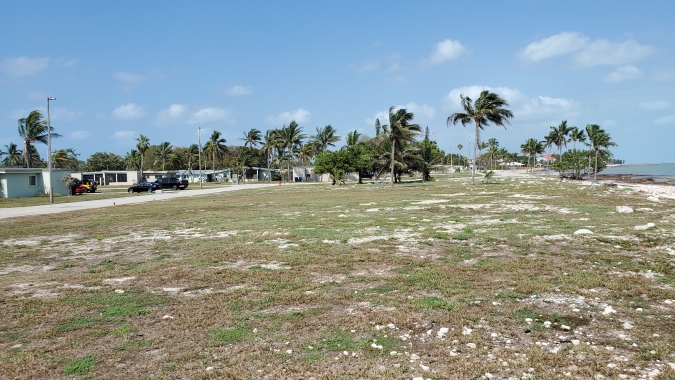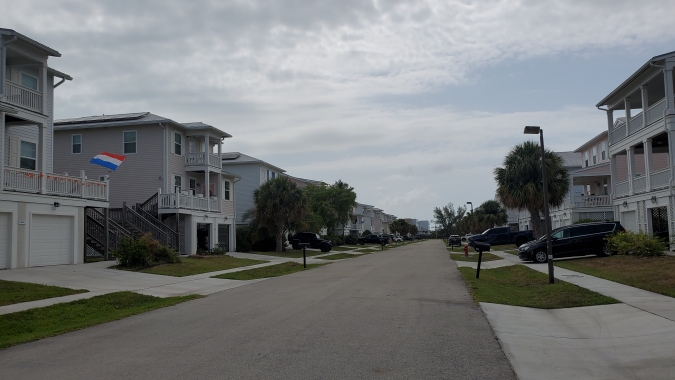If the City of Key West is serious about solving the out of control cost of long-term annual rents in Key West, then increasing significantly the supply of housing on the island is the only credible long-term solution. But where? The only areas in Key West where significant new construction can occur are located on the properties held by the US Navy. Can new Military Housing be constructed on these Navy properties? Yes, the Navy has a well defined process to build new and rebuild existing properties. Let's take a look.
What is Military Housing?
_______________________________________________________________________________________
The Military Housing Privatization Initiative (MHPI) Act – 10 USC 2871 was enacted by Congress in 1996. The objective was to improve the quality of on-base housing for service members. After years of the military running on-base housing, the Act enabled private-sector companies to construct, renovate, maintain and repair nearly 99% of family housing at military bases in the United States. There are more than 80 MHPI projects and 200,000 housing units on military bases nationwide. The Department of Defense (DoD) is responsible for general oversight of these privatized housing projects.
In 1998, the Department of Defense (DoD) gave operational responsibility for MHPI to each Service Branch; Army, Air Force, Navy and Marines for their respective bases. Each Service Branch structures their programs differently, but conceptually they are the same. The name the Navy gives to their MHPI program is Public Private Venture (PPV). In Key West, the private-sector company Balfour Beatty operates the MHPI program for on-base housing. The Office of the Secretary of Defense for Housing, located within the Assistant Secretary of Defense for Sustainment (ASD(S)), has oversight and final project approval authority.
Tenant Waterall Policy
Approximately one-third of all military families live in government-owned, private company managed on-base housing with the remainder living off base in non-military properties as either an owner or renter. Except for the most junior enlisted men and women, active-duty service members are not required to live on base. Those active duty service members, individuals and families, who opt to not live in on-base housing, receive a housing supplement called Basic Allowance for Housing (BAH). BAH assists the service member in renting or buying housing in the private market. BAH does not pay for utilities or provide for security deposits or advance rent. BAH varies according to the rank of the military member, the number of people in the family and the cost of living in the geographic location. When on-base housing is not fully occupied by active-duty service members, non-active duty military are allowed to rent on-base housing via the Tenant Waterfall Policy.
DoD established the Tenant Waterfall Policy to give MHPI companies, like Balfour Beatty, the ability to maintain on-base occupancy rates and financial stability. The Tenant Waterfall Policy allows the public to live in on-base housing when active duty service members decline to live on base. Upon activation of the Tenant Waterfall Policy (pgs 4-5), five tiers become eligible to live on-base and participate in the MHPI. In order of priority, they are: unaccompanied military personnel, active National Guard and Reserve, military retirees, federal government civilians, and civilians.
How does the Navy know how many units to have for on-base housing?
The Navy knows how many active duty personnel are supposed to be assigned to the Key West area and approximates their general demographic; single, married no children, married with children, etc., and builds to house approximately one-third of assigned service members in on-base housing.
Second and equally important, to determine whether the adjacent community can accommodate the off-base housing needs of the military at an installation, the Military Services are required to perform a housing market analysis. This analysis determines the viability of local off-base housing and how the availability, cost, suitability, physical condition, proximity to work, etc., of off-base housing affects the readiness and morale of active duty personnel. This formal written report occurs every five years and is called the Housing Requirements and Market Analysis (HRMA) report. A civilian consulting firm conducts a structured analytical process and writes the HRMA. Standardization and completeness of this structured analysis is governed by DoD Manual 4165.63. The HRMA can be used to determine whether or not additional on-base housing is needed so as to provide active duty service members with a viable on-base housing option. New construction may be used to satisfy a clearly defined need for housing as identified in the housing market analysis.
When was the last HRMA for Key West?
The last HRMA for Key West was written in 2016 with an update written in 2021. The consulting firm Robert D. Niehaus (RDN) performed the 2016 analysis, the 2021 update and wrote the reports. The HRMA report was delivered to the Commander, Navy Installations Command (CNIC). CNIC prioritizes all of the HRMA’s from all of the military facilities for that period and identifies funding needs. For security concerns, HRMA’s are not available to the public. The DoD Manual 4165.63 that guides the writing of the report is available to the public but not the final report itself.
I have not read either the 2016 or 2021 HMRA reports. Separately, I know the BAH for living off-base in Key West was increased in 2021-22 because of an identified lack of housing stock and affordable properties. Through informal conversations I’m nearly certain that in the 2016 HRMA, the viability of off-base housing options; selection, rent, suitability, etc., was determined to be satisfactory. Since 2016, a lot has happened in the long-term annual rental market for Key West:
- Properties used as annual rentals have been sold and the new owners have converted the property into single family homes
- Properties used as annual rentals have been converted into condos and sold to new owners
- Owners of rental properties have used their Business Tax Receipt – Non Transient license to legally shift away from annual rents into much more lucrative short term, 30-day rentals
- The net result is a major decrease in the supply of properties in the Key West community available or used for annual rent with a resultant tripling of the cost of annual rents.
The next HRMA for Key West is scheduled for 2026; however, the circumstances of out-of-control rents and the decreasing viability of off-base housing for active duty military have been well made to DoD, ASD(S), CNIC and other Navy authorities. Therefore, budgeting efforts are underway to redirect funds to perform the next HRMA for Key West in late 2024. Whether this redirecting of funds will be successful I do not know.
Conclusion
Landlords of traditional, annual lease properties have the upper hand in Key West and the Lower Keys and they know it. Increases in BAH and locally generated “down payment” assistance may make renter’s pain a little more bearable in the short term, but subsidizing greedy landlords does not fix the problem of unbalanced supply:demand.
Pockets of targeted construction; that is, construction in and primarily for renters in a particular neighborhood or for renters in specific professions such as that which is ongoing now in Key West automatically begs the question – why that neighborhood? – why that profession? What about me? The supply:demand imbalance is not going to be fixed by tailoring or favoritism.
The Navy has five primary properties in Key West; the Naval Air Station, Sigsbee Park (aka Dredgers Key), Fleming Key, Trumbo Point and Truman Annex. Sigsbee Park, Trumbo Point and Truman Annex each already contain on-base housing. Each of these three plus Fleming Key contain considerable undeveloped land (estimated in acres):
- Sigsbee Park contains 19 acres of undeveloped land
- Trumbo Point contains 29 acres of undeveloped land
- Truman Annex contains 36 acres of undeveloped land
- Fleming Key contains 184 acres of undeveloped land
By comparison, the neighborhood “The Meadows” in Old Town Key West, a highly desirable and homey neighborhood, contains approximately 35 acres. There are approximately 320 residential properties in The Meadows, almost all are one and two story detached homes.
How much more unaffordable does worker housing have to get before the City and the Navy join hands to build out of this mess?
I would MUCH prefer to live in new construction on a Navy base than in crowded and ill-maintained properties too often presented for rent in Key West by out of area landlords and their local property managers whose primary goal is maximizing profit, particularly when at any time that property could be sold and I'm desparate for a place to live.
If you have any questions or comments, please contact me here.
Good luck!
Additional Resources:





